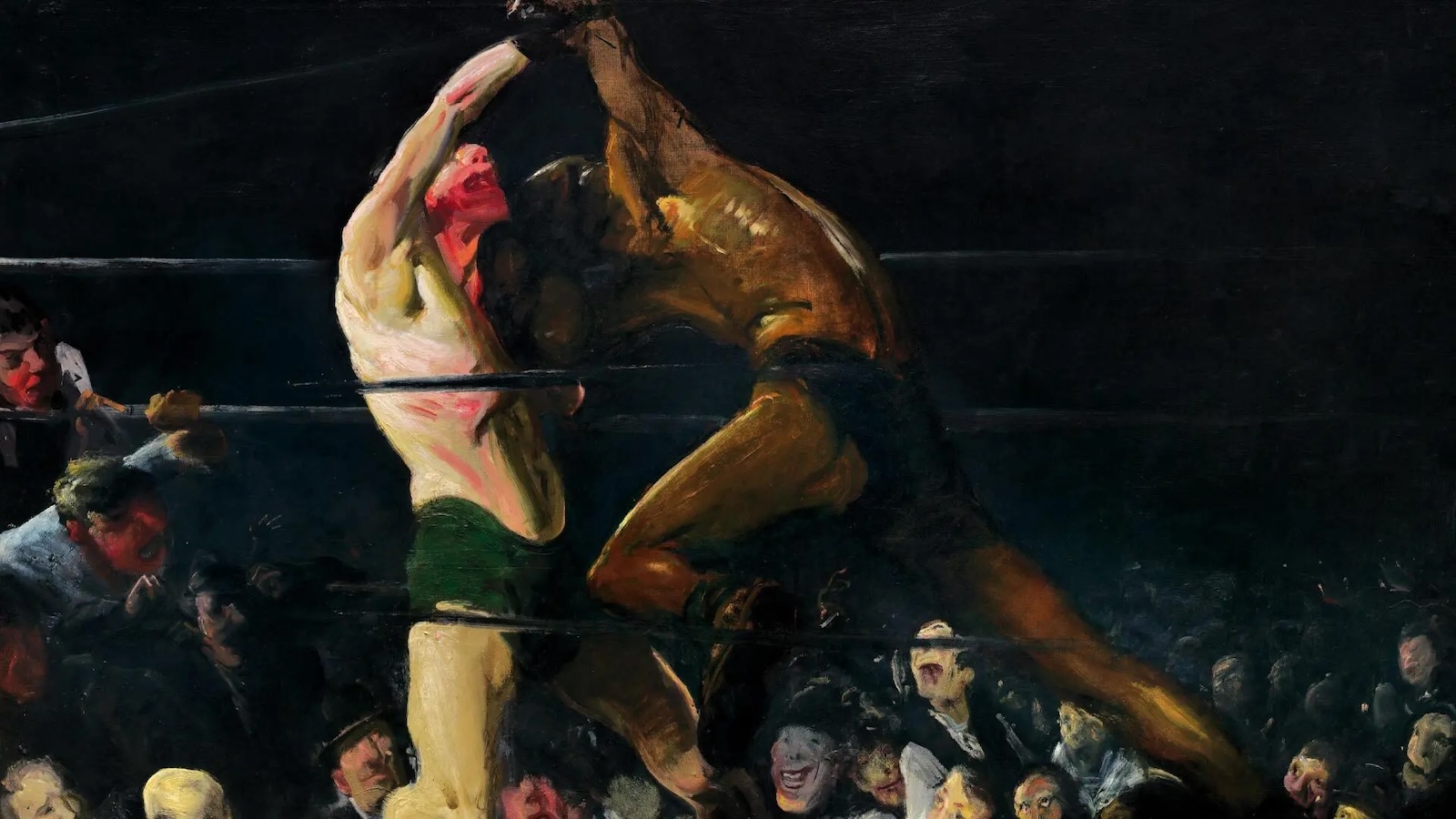New Book Throws Jab at Art of Black Boxers
August 30, 2024

Researcher reveals how stereotypes were reinforced.
By Sala Levin ’10 | Maryland Today
In George Bellows’ famous 1909 painting, “Both Members of This Club,” two prizefighters—one white, one Black—are locked in an intense struggle. The Black boxer looks to be winning, his powerful back curving over his white opponent, whose face and arms drip blood.
Though many art historians and critics have considered the artwork a daring representation of a victorious Black fighter, a new book out Friday by Jordana Moore Saggese argues that the painting—whose original title contained a racist slur—reflects widespread fears about Black people.
“Through the way Bellows paints this boxer, he becomes threatening, an aberration, a blob, this indiscriminate threat,” said Saggese, professor of modern and contemporary art as well as director of the David C. Driskell Center. “He has no face.”
In “Heavyweight: Black Boxers and the Fight for Representation,” she examines artistic depictions of Black boxers from the 19th through 21st centuries, revealing how their renderings reflected and reinforced stereotypes about Black men’s physicality, celebrity, power and place in the United States.
“The book is about imploring people to look beyond what they think of as iconic images of sport to what they might reveal about Black bodies in the public sphere,” Saggese said.
Boxing’s popularity in the 19th century rose alongside the proliferation of print media, making it a favorite topic of many artists. The sport, which predated football and basketball as a phenomenon, created the country’s earliest Black athletes.
Racist fears about Black boxers emerged in images. Jack Johnson, crowned the first Black world heavyweight boxing champion in 1908, was “reduced to monkey images, shown eating fried chicken and watermelon” to diminish his strength—not just as a boxer, but as a representative of Black men, Saggese said.
Read the full story in Maryland Today.
Photo info: George Bellows, “Both Members of This Club,” 1909, oil on canvas, National Gallery of Art, Washington, D.C.

